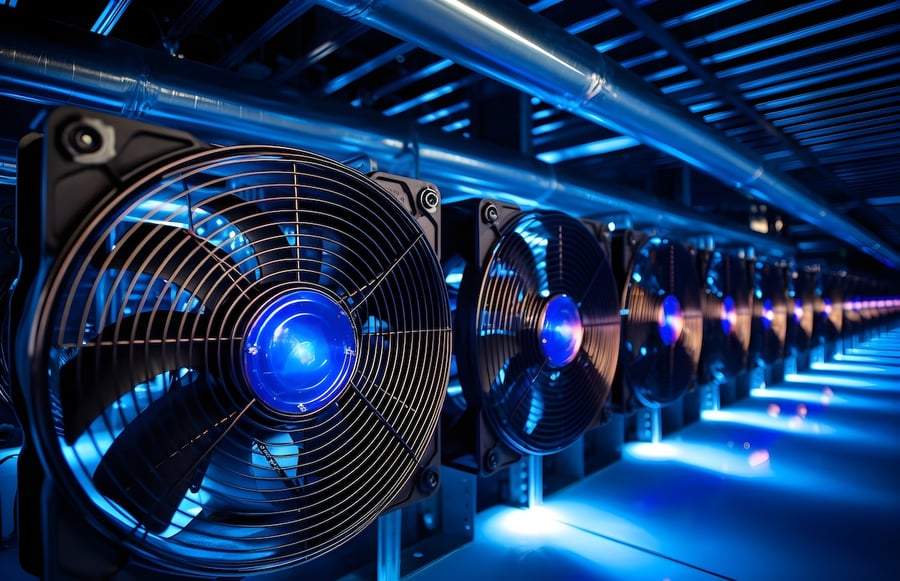
Data centers have been getting hotter, a trend that’s attributable to several factors. Increased IT rack densities are putting higher demands on cooling systems and causing many data center owners and operators to reevaluate their approach to cooling.
Let’s look at the trends affecting escalating cooling needs and what they mean for high-density data center cooling.
Allowable and Recommended Operating Temps Shift Upward
Over the years, one of the trends we’ve seen in the industry is that data centers have gotten progressively hotter. That’s due in part to an increasing emphasis on energy efficiency and a better understanding of safe operating temperatures for IT equipment, which has caused recommended temperature ranges to increase.
ASHRAE recommends keeping the ambient data center temperature at the following:
- A1 to A4 class hardware: Maintain between 18-27 C (64.4-80.6 F).
- A1 and A2 hardware: These categories encompass most data center equipment and should be maintained at 15-32 C (59-89.6 F) and 10-35 C (50-95 F), respectively.
- High-density servers: The allowable temperature for this class is lower than for other equipment at 5-25 C (41-77 F), and the recommended temperature range is 18-22 C (64.4-71.6 F).
Higher allowable and recommended operating temperatures aren’t the only reasons data centers are heating up. Greater cooling demands are also arising because of trends in data center hardware and functionality. We’ll explore these factors below.
Trends Driving Greater Cooling Needs in the Data Center
Why is IT equipment heating up, increasing the demand for data center cooling? There are a few main contributing factors to high-density data center cooling.
High-Performance Computing
As Data Center Frontier explains, high-performance computing (HPC) is no longer reserved for special use cases like scientific computing tasks. Today, HPC can be used for “effectively any use case that requires the processing of large volumes of data, executing complex simulations, or simply solving problems more quickly and efficiently.” HPC is more accessible than ever and extremely useful across a wide range of applications, but it does come with higher cooling demands.
Generative AI
Another trend that’s contributing to higher densities and, in turn, higher cooling demands is the proliferation of artificial intelligence (AI). More specifically, generative AI (for example, tools like ChatGPT) has been taking the world by storm, proving its usefulness across an endless array of personal and professional applications. As demand for generative AI increases, data centers must rise to the occasion and, in many cases, increase their cooling capabilities.
Hotter IT Equipment
A third factor to consider lies with the IT equipment itself. Power density per rack and per server chassis has been escalating considerably in recent years, driven primarily by increased thermal design power (TDP).
Intel’s latest server processor series is an example of the hotter equipment entering the market. This series comes with TDP ratings as high as 350 watts (W), with the option for achieving TDP as high as over 400W with the right configuration. These TDP ratings are over twice as high as those from a decade ago.
As Uptime Institute points out, servers for high-performance computing applications can “act as an early warning of the cooling challenges that mainstream servers will face as their power consumption rises.”
Contending with Cooling Challenges
High-density data center cooling presents two major challenges: High-power CPUs produce more heat and require cooler operating temperatures. This compounded issue puts a strain on cooling systems and calls for innovative solutions to keep the data center acceptably cool.
Cooling will continue to be a hot topic in the industry because there is no obvious or one-size-fits-all solution. Data center owners and operators must carefully analyze their own needs and strike the right balance among different priorities (which can sometimes be at odds with each other), including:
- Optimal performance
- Sticker price and operating costs
- Equipment and space needed
- Complexity and maintenance needs
- Energy efficiency
- Environmental impact
The best cooling solutions today offer advantages across multiple factors, though one factor may be considered a disadvantage (such as a high upfront cost for an energy-efficient, high-performance immersion cooling solution). Ultimately, the right cooling solution for your data center depends on your cooling demands and your requirements.
Want to learn more about high-density data center cooling and land on the right solution for your facility? Check out our popular e-book, The Complete Guide to Data Center Cooling!



Comments